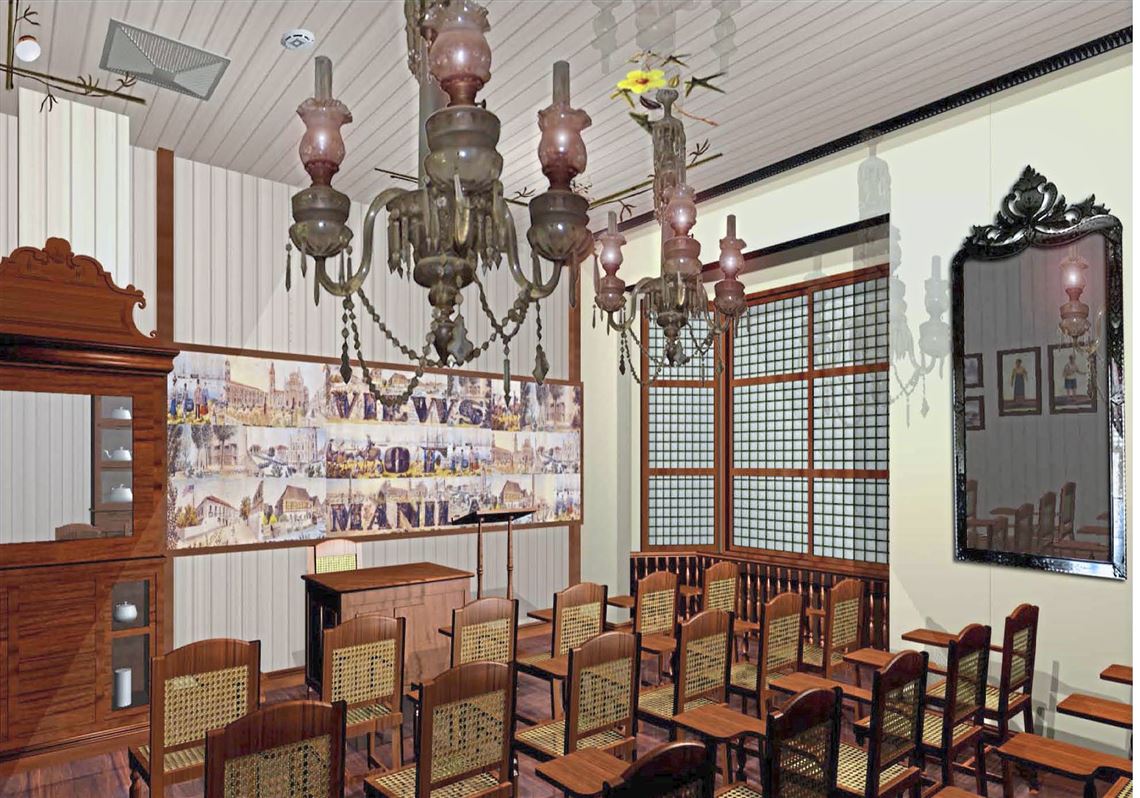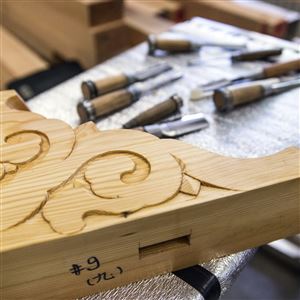It’s official: The Philippines is going to be located next door to Austria and down the hall from Korea in Room 313.
After more than 10 years of planning and fund-raising, the construction of the Philippine Nationality Room at the University of Pittsburgh Cathedral of Learning has begun. This will be the 31st Nationality Room in this towering centerpiece of the Pitt campus, a project that has been ongoing since 1926.
Construction of the more than $524,000 project began on May 1 and is expected to finish in July before the Fall semester begins, said Maryanne Sivak, assistant to the director of the Nationality Rooms.
Jaime Abola of Jefferson Hills is a member of the Philippine Nationality Room task force that has worked to campaign for, design and raise the funds needed to create the Philippine classroom. The task force is comprised of representatives of Filipino cultural groups from the Pittsburgh area including the Filipino American Association of Pittsburgh, the Philippine-American Medical Society of Western Pennsylvania and the Philippine-American Performing Arts of Greater Pittsburgh.
“Of all the rooms at the university there is something unique about the Philippine room. It’s the only colony that the U.S. had,” said Mr. Abola, a Pitt graduate. “For a long time the Philippines were actually American and fought in World War II alongside them...If there’s any group that should have a room at the cathedral it should be the Philippines because we have a shared history.”
In its most recent estimate, the U.S. Census Bureau reported that 2,035 Filipino-born individuals reside in the seven-county Pittsburgh metropolitan area, which is more than from any Asian country except India, China and Korea.
Fittingly, the design of the room has both Filipino and Spanish influences, designed in the Bahay na bato tradition drawing inspiration from Quema House, located in the UNESCO World Heritage city of Vigan in the Philippines, Mr. Abola said.
Prior to the approval of the design, cultural groups are given guidelines. For example, the room must be decorated from an era that pre-dates 1787, the founding year of the university; display a culturally authentic design; and be a fully functioning classroom. When reviewing the guidelines, Mr. Abola said, the task force decided to add two more: that the room would be immediately recognizable as a Filipino room and that visitors would be moved to say “woo-w-w” upon entering it.
Despite the large variations in architecture throughout the islands, Mr. Abola hopes the traditional 18th century design and decor the room will be immediately recognizable to anyone of Filipino heritage.
The basis for the design was provided by Popi Laudico, who is based out of Manila. Warren Bulseco of WTW Architecture served as the architect of record of the nationality room task force.
Notable aspects of the design include capiz windows, wide floor planks, solihiya chairs, a large mirror, and artwork exemplifying local life and culture. Artifacts from the Philippines will also be on display in a cabinet. All of the materials used will be from the U.S. except for capiz seashells, Mr. Abola said. The seashells were used instead of glass for window panes in older Filipino buildings because they were more durable than glass.
The concept of the Nationality Rooms began with University of Pittsburgh chancellor John G. Bowman, who observed that students had nowhere to study except for old World War I barracks, Ms. Sivak said. He envisioned the Cathedral of Learning, filled with rooms celebrating the cultures of the different immigrant groups represented in Pittsburgh.
E. Maxine Bruhns has served as director of the Nationality Rooms since 1965 when there were only 19 rooms. Ms. Bruhns, who lived in Europe, the Middle East, Asia and Africa for 15 years before assuming the director position, believes that everyone can benefit from learning about their heritage.
“You don’t grow on trees, you had to come from somewhere,” Ms. Bruhns said. “Once you learn where your ancestors come from, you can learn a lot from visiting the room.”
The cathedral itself was constructed with the 10-cent donations of 80,000 schoolchildren from the area, Ms. Bruhns said. Upon their donations each child received a certificate stating their ownership of a brick in the new building. Today, the Cathedral of Learning receives almost 30,000 visitors every year — occasionally some of the same children who donated 10 cents years ago.
In addition to the Philippine Room, the Korean Heritage Room, which honors both North and South Korea, was recently finished, Ms. Bruhns said. Next up are a Finnish room, which has been in the works for more than 25 years, and an Iranian room. For hours and tours of the Nationality Rooms, go to http://www.nationalityrooms.pitt.edu.
A dedication ceremony, where the Filipino community will present the completed room to the University of Pittsburgh, is being planned for July 2019. It will be free and open to the public.
“We’re hoping [the Philippine Nationality Room is] a permanent window into the Philippine culture,” Mr. Abola said.
Marie Fazio: mfazio@post-gazette.com
First Published: May 31, 2018, 3:00 p.m.
















